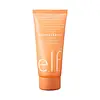What's inside
What's inside
 Key Ingredients
Key Ingredients

 Benefits
Benefits

 Concerns
Concerns

 Ingredients Side-by-side
Ingredients Side-by-side

Water
Skin ConditioningDecyl Glucoside
CleansingLauryl Glucoside
CleansingCocamidopropyl Betaine
CleansingSodium Lauroyl Sarcosinate
CleansingGlycereth-7
HumectantPEG-120 Methyl Glucose Dioleate
EmulsifyingNiacinamide
SmoothingLavandula Angustifolia Oil
MaskingXanthan Gum
EmulsifyingCocamide Mea
EmulsifyingGlycol Stearate
EmollientDMDM Hydantoin
PreservativeDisodium EDTA
Citric Acid
BufferingButylene Glycol
HumectantIodopropynyl Butylcarbamate
PreservativeWater, Decyl Glucoside, Lauryl Glucoside, Cocamidopropyl Betaine, Sodium Lauroyl Sarcosinate, Glycereth-7, PEG-120 Methyl Glucose Dioleate, Niacinamide, Lavandula Angustifolia Oil, Xanthan Gum, Cocamide Mea, Glycol Stearate, DMDM Hydantoin, Disodium EDTA, Citric Acid, Butylene Glycol, Iodopropynyl Butylcarbamate
Water
Skin ConditioningSodium Cocoamphoacetate
CleansingGlycerin
HumectantLauryl Glucoside
CleansingGlycol Stearate
EmollientSodium Cocoyl Glutamate
CleansingCitric Acid
BufferingSodium Lauryl Glucose Carboxylate
CleansingPropylene Glycol
HumectantButylene Glycol
HumectantPlukenetia Volubilis Seed Oil
EmollientSodium PCA
HumectantSodium Lactate
BufferingDiazolidinyl Urea
PreservativeParfum
MaskingVitis Vinifera Seed Oil
EmollientTetrasodium EDTA
Butyrospermum Parkii Seedcake Extract
Skin ProtectingArnica Montana Flower Extract
MaskingMacrocystis Pyrifera Extract
Skin ConditioningFructose
HumectantGlycine
BufferingNiacinamide
SmoothingUrea
BufferingIodopropynyl Butylcarbamate
PreservativeInositol
HumectantTocopherol
AntioxidantWater, Sodium Cocoamphoacetate, Glycerin, Lauryl Glucoside, Glycol Stearate, Sodium Cocoyl Glutamate, Citric Acid, Sodium Lauryl Glucose Carboxylate, Propylene Glycol, Butylene Glycol, Plukenetia Volubilis Seed Oil, Sodium PCA, Sodium Lactate, Diazolidinyl Urea, Parfum, Vitis Vinifera Seed Oil, Tetrasodium EDTA, Butyrospermum Parkii Seedcake Extract, Arnica Montana Flower Extract, Macrocystis Pyrifera Extract, Fructose, Glycine, Niacinamide, Urea, Iodopropynyl Butylcarbamate, Inositol, Tocopherol
Ingredients Explained
These ingredients are found in both products.
Ingredients higher up in an ingredient list are typically present in a larger amount.
Butylene Glycol (or BG) is used within cosmetic products for a few different reasons:
Overall, Butylene Glycol is a safe and well-rounded ingredient that works well with other ingredients.
Though this ingredient works well with most skin types, some people with sensitive skin may experience a reaction such as allergic rashes, closed comedones, or itchiness.
Learn more about Butylene GlycolCitric Acid is an alpha hydroxy acid (AHA) naturally found in citrus fruits like oranges, lemons, and limes.
Like other AHAs, citric acid can exfoliate skin by breaking down the bonds that hold dead skin cells together. This helps reveal smoother and brighter skin underneath.
However, this exfoliating effect only happens at high concentrations (20%) which can be hard to find in cosmetic products.
Due to this, citric acid is usually included in small amounts as a pH adjuster. This helps keep products slightly more acidic and compatible with skin's natural pH.
In skincare formulas, citric acid can:
While it can provide some skin benefits, research shows lactic acid and glycolic acid are generally more effective and less irritating exfoliants.
Most citric acid used in skincare today is made by fermenting sugars (usually from molasses). This synthetic version is identical to the natural citrus form but easier to stabilize and use in formulations.
Read more about some other popular AHA's here:
Learn more about Citric AcidGlycol Stearate comes from stearic acid and ethylene glycol.
It is a creamy wax used to stabilize ingredients as an emulsifier. Glycol stearate also contains emollient properties. Emollients sit on top of the skin to prevent moisture from escaping.
This ingredient may not be Malassezia folliculitis, or fungal-acne safe.
Learn more about Glycol StearateIodopropynyl Butylcarbamate is a preservative.
Lauryl Glucoside sugar- and lipid-based cleansing agent. It is created from glucose and lauryl alcohol.
This ingredient is a surfactant, making it easier to rinse oil, dirt, and other pollutants away.
A British study found lauryl glucoside to cause skin sensitivity for some people. We recommend speaking with a professional if you have concerns.
Other names for this ingredient include "Lauryl Polyglucose", "Lauryl glycoside", and "D-Glucopyranoside".
Learn more about Lauryl GlucosideNiacinamide is a multitasking form of vitamin B3 that strengthens the skin barrier, reduces pores and dark spots, regulates oil, and improves signs of aging.
And the best part? It's gentle and well-tolerated by most skin types, including sensitive and reactive skin.
You might have heard of "niacin flush", or the reddening of skin that causes itchiness. Niacinamide has not been found to cause this.
In very rare cases, some individuals may not be able to tolerate niacinamide at all or experience an allergic reaction to it.
If you are experiencing flaking, irritation, and dryness with this ingredient, be sure to double check all your products as this ingredient can be found in all categories of skincare.
When incorporating niacinamide into your routine, look out for concentration amounts. Typically, 5% niacinamide provides benefits such as fading dark spots. However, if you have sensitive skin, it is better to begin with a smaller concentration.
When you apply niacinamide to your skin, your body converts it into nicotinamide adenine dinucleotide (NAD). NAD is an essential coenzyme that is already found in your cells as "fuel" and powers countless biological processes.
In your skin, NAD helps repair cell damage, produce new healthy cells, support collagen production, strengthen the skin barrier, and fight environmental stressors (like UV and pollution).
Our natural NAD levels start to decline with age, leading to slower skin repair, visible aging, and a weaker skin barrier. By providing your skin niacinamide, you're recharging your skin's NAD levels. This leads to stronger, healthier, and younger looking skin.
Another name for vitamin B3 is nicotinamide. This vitamin is water-soluble and our bodies don't store it. We obtain Vitamin B3 from either food or skincare. Meat, fish, wheat, yeast, and leafy greens contain vitamin B3.
The type of niacinamide used in skincare is synthetically created.
Learn more about NiacinamideWater. It's the most common cosmetic ingredient of all. You'll usually see it at the top of ingredient lists, meaning that it makes up the largest part of the product.
So why is it so popular? Water most often acts as a solvent - this means that it helps dissolve other ingredients into the formulation.
You'll also recognize water as that liquid we all need to stay alive. If you see this, drink a glass of water. Stay hydrated!
Learn more about Water